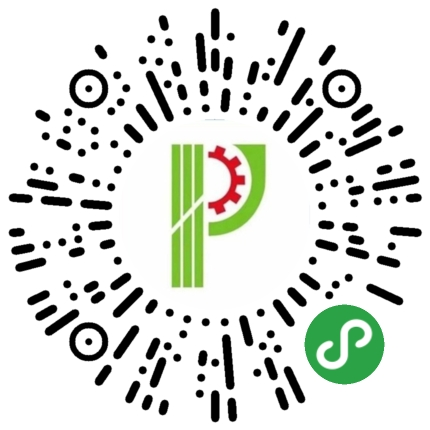



Common problems and treatment of screw extruders In the use of mechanical equipment, it is inevitable that such problems occur, so it is very important to find problems in time and find solutions. Here we analyze some common problems with screw extruders and discuss the best treatments.
First, the common problems and treatment methods of the extruder
1. If you do not eat the material, there will be “leakage” and screw heating.
1.1 Reasons and methods
1.1.1 The reamer is severely worn. The gap between the reamer and the inner wall of the mud cylinder is too large, or the helix angle of the reamer blade is incorrect. When replacing the reamer, care should be taken to keep the gap between 3 and 5 mm, and the reamer blade should be made according to the design angle.
1.1.2 The surface of the reamer blade is too rough, and the friction between the mud and the blade is too large. Therefore, when stacking the reamer, do not build a group of welds. After all the replacement, it should be gradually changed and replaced in batches to ensure smooth exit. brick.
1.1.3 The mud wall bushing is severely worn. The gap between the reamer blade and the mud cylinder wall is too large, which causes the rotary motion of the mud material in the mud tank to be too much, and the mud material does not come out and cannot enter. At this time, a new mud liner should be replaced, or a number of parallel or inclined ribs on the inner wall of the bushing should be installed instead of the worn-out groove to prevent the mud from rotating ineffectively and increase its effectiveness. Extrusion.
1..1.4 If the gap between the trowel blade and the reamer is too large to press the mud, the blade should be adjusted or repaired and the blade should be adjusted so that the gap with the reamer blade is less than 10mm.
2. Mud movement bending
2.1 Reasons and methods
2.1.1 The mud strip is bent to one side. This is because the center line of the machine mouth, core tool, mud cylinder and spiral reamer is not caused by the inclination of the alignment or the roller bed installation, and the position can be solved by adjusting the position.
2.1.2 S-shaped bending occurs in the mud strip. This is because the compression length of the neck is not enough. The main leaves and the minor leaves of the first section of the spiral cutter are not aligned or the secondary leaves of the first section of the cutter are seriously worn and become small, so that only the semicircle of the main leaf is pushed out of the mud during operation. . At this point, the first section of the cutter should be replaced and the secondary leaves should be welded.
Overload
3.1 Reasons and methods
3.1.1 The mud is too dry. At this time, the dry mud should be taken out first. It is best to remove the machine mouth and the machine head, start the dry material in the machine draining mud tank, then install and operate, and appropriately increase the molding water within the specified range.
3.1.2 After a long period of downtime, the remaining material in the mud tank becomes dry and hard, which will not only be seriously overloaded, but sometimes it will not start. In order to prevent this from happening, when the machine is shut down for more than 8 hours, do not shut down the water in the machine. For the two-stage vacuum extruder, the mud in the upper mud tank should be properly supplied to keep it moist, if it is stopped at 2 Above the day, you should try to open the mud and then stop.
3.2 Precautions: When overloading, the load of the motor is high and the clutch is slippery. At this time, it is forbidden to force the start, so as not to damage the related parts, or even cause a large accident such as crushing the mud tank and the nose.
4. The machine "swings"
4.1 Reasons and methods
4.1.1 “Swinging head” is a common problem of screw extruders. This is because the reamer shaft is a long cantilever shaft with poor stability. When the bearing is loose, the spindle is bent, the secondary lobes of the first reamer are too Hours will exacerbate this situation. If the mud cylinder is not installed correctly, the gap between the spiral reamer blade and the mud cylinder wall is not the same, and the outer edge of the spiral reamer blade is seriously out of round, causing uneven force on the main shaft and swinging the head, which should be corrected in time, and often Tighten the anchor bolts and connecting bolts to prevent the swing head from swinging.
5. Spiral lines appear after the mud strips are extruded
5.1 Reasons and methods
5.1.1 Because the mud strip is affected by the spiral action of the reamer, the advance speed of the mud material in the mud cylinder section is inconsistent, the mud near the shaft core goes faster, the mud at the edge goes slower, and the mud flow between the speeds is different. An interface is formed in which water and air are concentrated in the voids of the face, causing delamination. The main reason is that the plasticity of the mud is high, the molding moisture is too large, the spindle speed is too high, and the mud wall is muddy on the inner wall. The treatment is as follows:
(1) Raw materials of different natures should be well mixed and evenly squeaky and aging, so that the water can fully penetrate into the raw material particles and reduce the moisture on the surface of the raw mud.
(2) Appropriately reduce the molding moisture to increase the friction between the mud layers.
Second, the common problems of finished bricks and treatment methods
Hairline crack
On the brick surface, there are cracks that are shallow and thin, and there is basically no approximation of a straight line, and sometimes the crack extends to the strip or top surface. This is mostly a hidden danger left during molding, and the roasting is improperly used and the crack is enlarged. To this end, the plasticity index of the raw material should be appropriately reduced, the rotation speed and the helix angle of the spiral reamer of the brick machine should be adjusted, a separate spiral reamer should be used, and a mud stick should be added on the mud tank to reduce the stratification of the mud; or hot water, Steam agitation, vacuum sludge and other measures to reduce water and gas in the mud to eliminate stratification; in addition, the roasting should be properly used, evenly drained and the front gates are implemented in stages.
Burst
When the residual moisture in the kiln brick is too high, and the initial heating rate of the pre-tropical zone exceeds 25-35 ° C / h, the steam that is rapidly vaporized in the blank is too late to be discharged, and the brick is squeezed. The higher the residual moisture, the more the situation Severe, even the top of the kiln can hear the cracking sound, especially after the bonfire has just entered the pre-tropical zone, the temperature is not too high, and the water damage is not too high. The water vapor often only breaks the surface of the brick to form a spider-like fine crack. In addition to controlling the residual moisture of the kiln billet to be less than 8%, the pre-tropical zone should be extended appropriately to make the temperature rise and evenly dehydrate, and the remote gate is slowly raised after the bonfire and the wheel kiln are burned.
3. Pan frost
A layer of white powder is produced on the brick surface. This is a residue of soluble inorganic salts such as magnesium sulfate and sodium sulfate remaining in the brick body. After water absorption, the residue of the surface layer is evaporated. Since the green body contains a certain amount of crystal water, it expands after dehydration, and therefore, the surface layer of the brick is also cracked when the frost is applied. To this end, the content of twisted magnesium in the mud should be controlled to less than 3%. Strengthen the pulverization, increase the fineness and appropriately extend the roasting and holding time to make the water-insoluble silicates reduce or eliminate the hazards.
4. Mute brick
In addition to the mute bricks caused by under-fire, the invisible cracks caused by molding and the invisible delamination left by the unevenness of the mixing due to too much impurities in the raw soil, the wet billet is too hot in the preheating, the frosted brick And the bricks in the pre-tropical moisture absorption condensation will form micro-cracks, resulting in dumb bricks, body formation cold micro-cracks, etc., may also cause dumb bricks. In this regard, in addition to strengthening the raw material treatment, remove impurities, fully mix, improve the relevant parameters of the brick machine, should also pay attention to not burning high temperature billet, frost blank, while ensuring good preheating, there is a long enough insulation.
5. Brick surface burning and foaming
The reason is that the calcining zone heats up too quickly, the surface layer melts and sinters rapidly, and the pores are blocked. The gas generated by the physical and chemical reactions still in progress is nowhere to go, and bubbles are formed on the brick surface. Therefore, the heating rate of the calcining belt should be lower than 40-70 ° C / h, especially when the billet has reached the temperature above 900 ° C, the rate of continued heating is lower than 20 ° C - 30 ° C / h, in order to prevent the brick surface from burning bubble.
What is the model number on the extruder label indicating what?
In the rubber extruder standard GB/T 12783-91, the model number on the label is as follows:
From left to right order: the first grid plastic machine code is S; the second grid extruder code is J; the third grid refers to the different structural form codes of the extruder. The three grids are combined: the plastic extruder is SJ; the plastic venting extruder is SJP; the plastic foaming extruder is SJF; the plastic feeding extruder is SJW; the plastic shoe extruder is SJE; the step plastic extruder is SJJ; the twin screw plastic extruder is SJS; the conical twin screw plastic extruder is SJSF; and the multi-screw plastic extruder is SJD. The fourth grid indicates the auxiliary machine, codenamed F; if it is the extrusion unit, the code is E. The fifth grid parameter refers to the screw diameter and the aspect ratio. The sixth grid refers to the design order of the products, arranged in the order of letters A, B, C, etc., the first design does not mark the design number.
For example: SJ-45X25, which means plastic extruder, screw diameter of 45mm, screw length to diameter ratio of 25:1. When the screw length to diameter ratio is 20:1, it is not marked.
Dongguan Pinyang Cable Machinery Co., Ltd. is a professional manufacturer of wire and cable equipment for professional development, design and production. It specializes in: optical fiber extruder, ultra-fine winding machine, earphone wire special machinery and other products, optical fiber extruder, very fine winding Machine, earphone line dedicated mechanical consultation hotline: 13731224526 / Lu Jianjun
 APP
APP  Applets
Applets  No public
No public